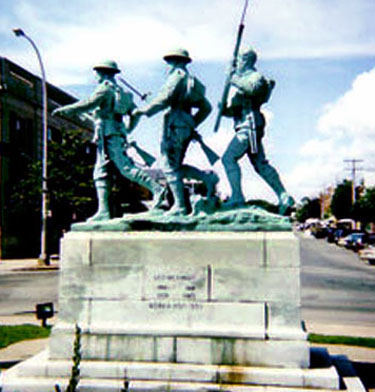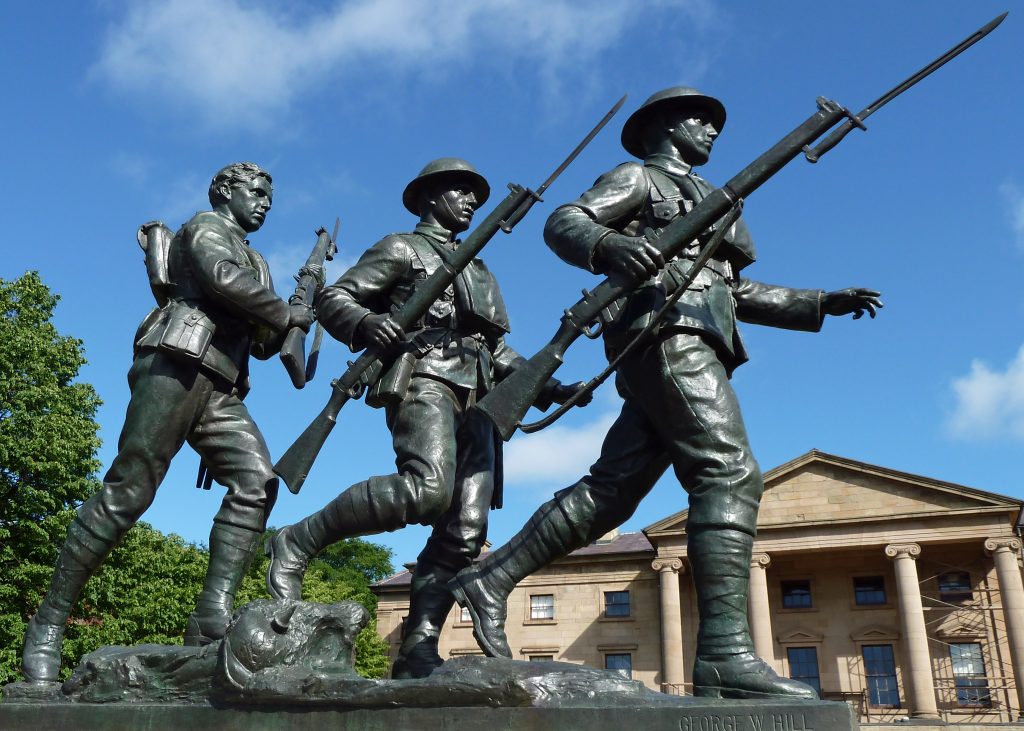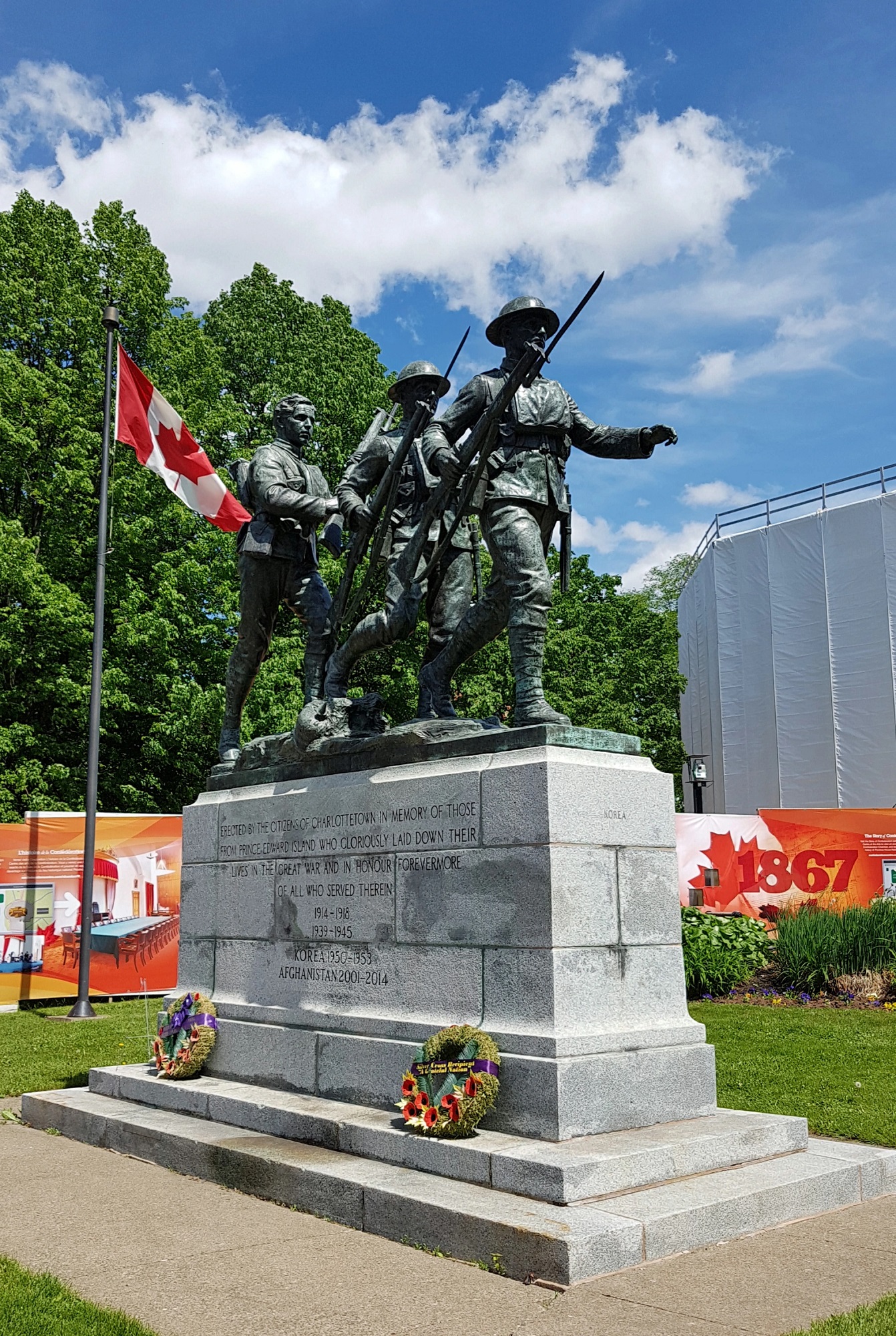The Soldiers’ Monument was unveiled on 16 July 1925 by Matilda McLean, wife of Senator John McLean and mother of Rena McLean, the Prince Edward Island nurse killed on the Llandovery Castle. Those who fell in the Great War and those who have returned are commemorated by a bronze group of Canadian soldiers designed by sculptor George William Hill. His name is inscribed on the base of the bronze group, under the foot of the lead soldier.
The group, headed by a sergeant, is shown advancing, each soldier with a different movement makes his way over the rifted surface. A German Pickelhaube helmet sticks out of the mud. The spirited action with the expression of determined purpose shows on every face, illustrates the great aptitude for attack, the hard fighting qualities which gained for the Canadian soldiers the highest regard of human valor.
The monument cost $16,000, of which $11,500 was paid by the city and the remainder by public donation. Additional lettering was added at a later date to recognize the Second World War and Korean War.
George William Hill was born in Shipton, Eastern Townships, in 1861. He learned to carve marble in his father’s company, after he graduated from college. Between 1889 and 1894, he left Quebec to study sculpting at the École nationale des beaux-arts and Académie Julian in Paris. When he returned to Montreal, he opened a studio and worked with architect Robert Findlay and brothers Edward and William S. Maxwell. Known for his public monuments and war memorials, he is now considered one of the most important Canadian sculptors of the early twentieth century.
Hill designed several monuments commemorating Canadians lost in the South African War, including the Strathcona and South African Soldiers' Memorial in Quebec and Boer War Soldiers Monument in Ontario. At the end of the First World War, Hill was awarded several contracts by towns and cities wishing to pay homage to citizens who had died on the battlefields. Between 1920 and 1930 he designed these monuments: Westmount Cenotaph, Magog Cenotaph, Argenteuil Cenotaph, Richmond Cenotaph, Sherbrooke War Memorial in Quebec; Pictou County War Memorial in Nova Scotia; and Soldier's Monument, The Soldier and Nurses’ Memorial in Ontario.


